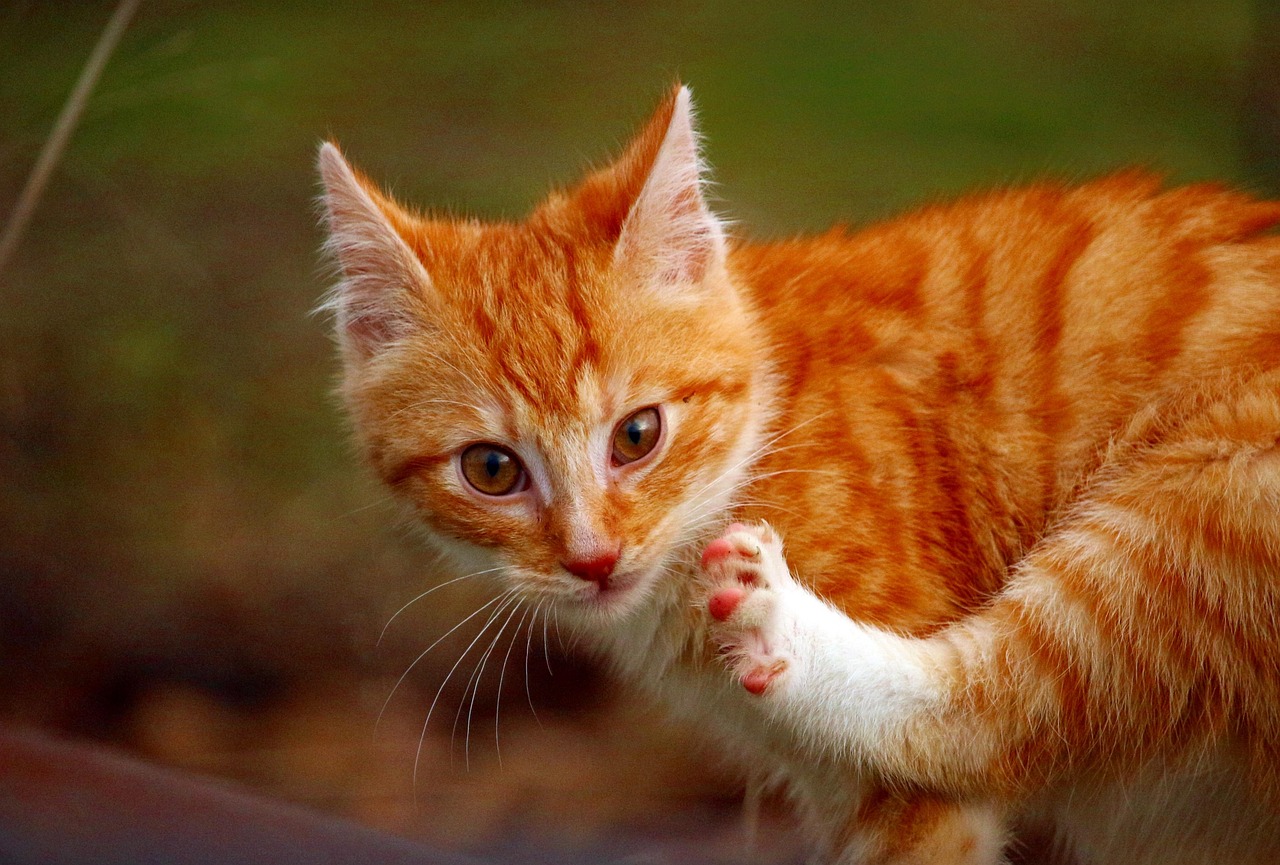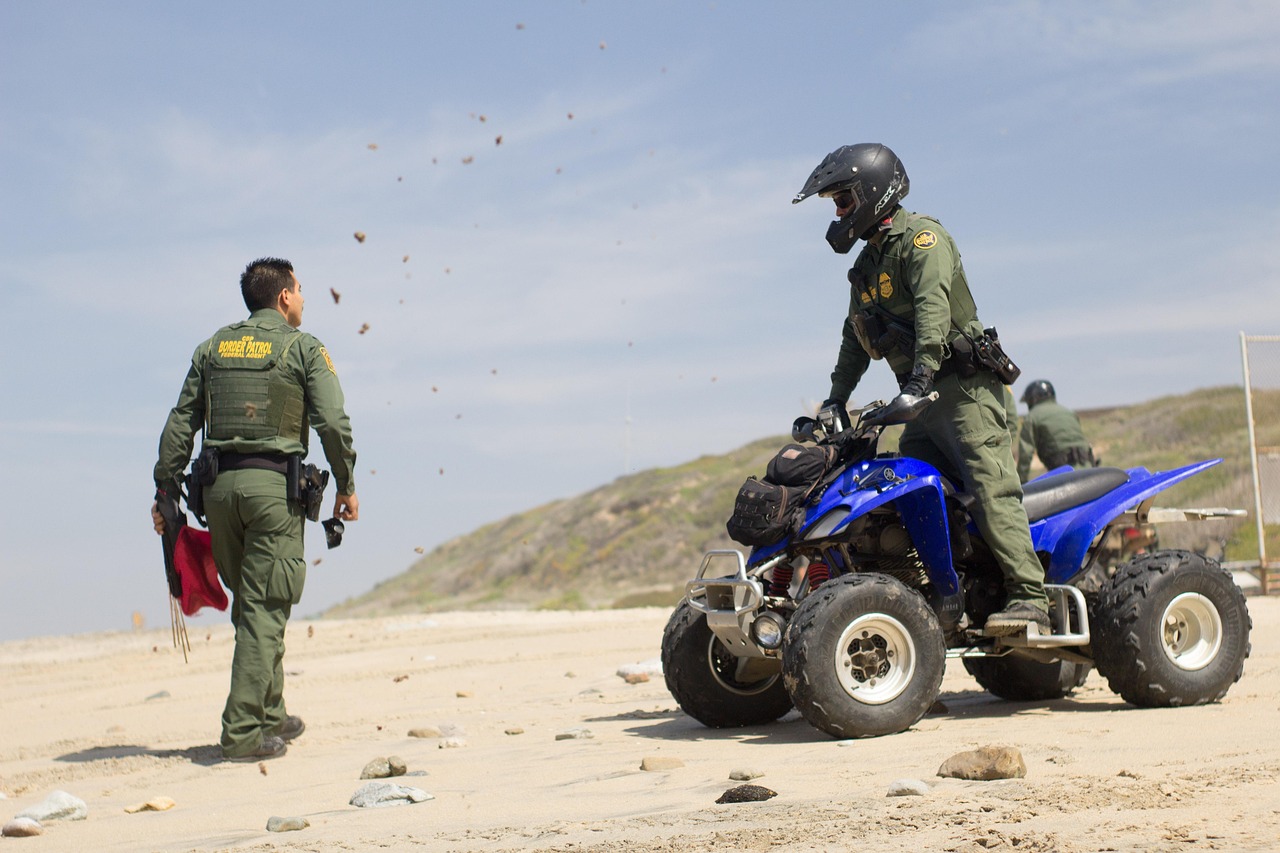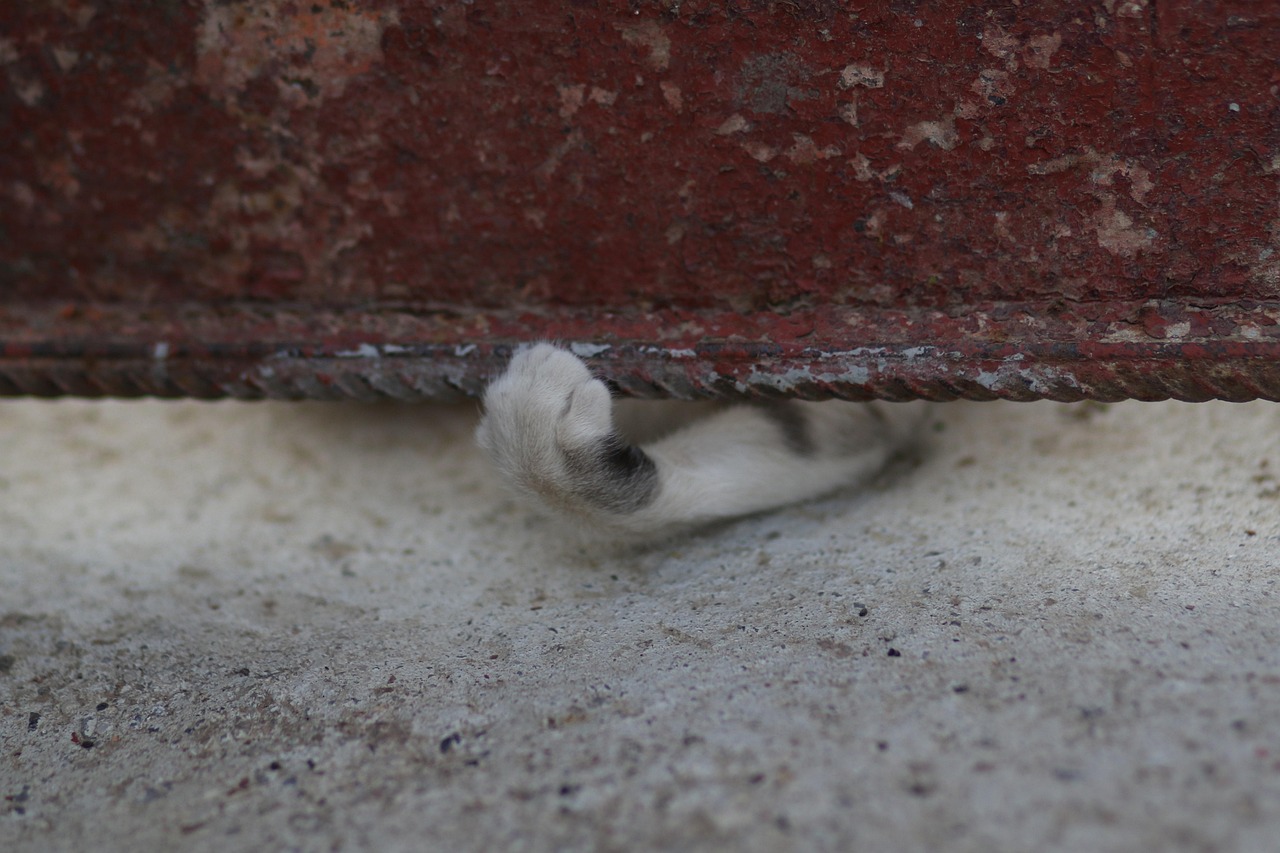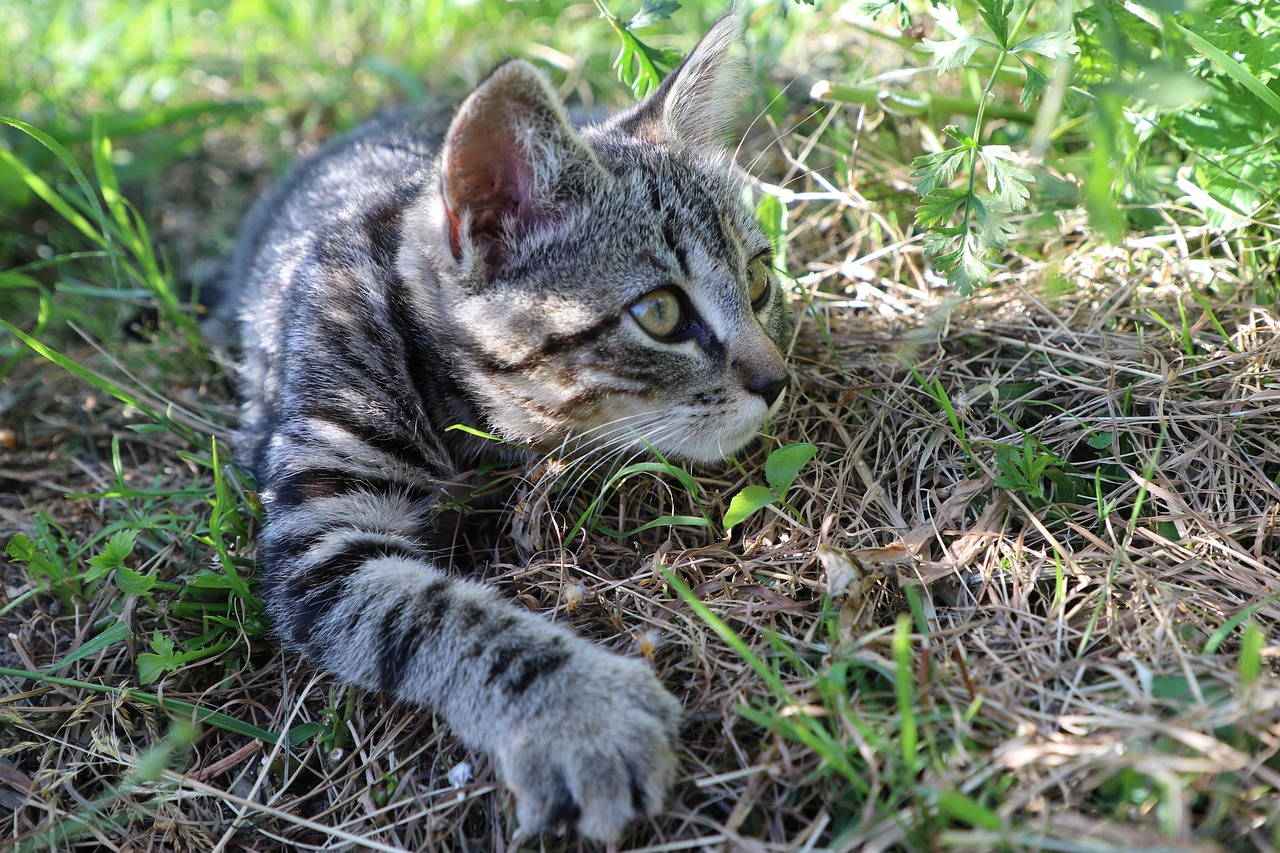This article explores the development of the beloved children’s series Paw Patrol, examining its origins, character evolution, cultural impact, and future direction, providing a comprehensive overview for fans and parents alike.
The Origins of Paw Patrol
Paw Patrol debuted in 2013, created by Keith Chapman. The initial concept was to create a show that combined adventure with valuable life lessons. The creative process involved a talented team of animators and writers who aimed to design engaging characters that would resonate with young audiences. The show quickly gained popularity, becoming a staple in children’s programming.
Character Development Over the Years
Each character in Paw Patrol possesses unique traits and skills, which have evolved as the series progressed. The introduction of new characters has enriched the narrative, allowing for diverse storylines and adventures.
- Introduction of New Characters: As the show continued, new pups like Everest and Tracker were introduced, bringing fresh dynamics to the team and enhancing audience engagement.
- Ryder: The Team Leader: Ryder, the central figure, has seen his character develop alongside the pups, showcasing leadership and problem-solving skills that inspire young viewers.
- Chase, Marshall, and Skye: Iconic Heroes: The original trio remains fan favorites, with their distinct personalities and teamwork emphasizing important values.
Character Backstories and Relationships
Understanding the characters’ backgrounds enhances viewer connection. The relationships between characters, such as the camaraderie among the pups and their bond with Ryder, have evolved, adding depth to the storytelling.
Thematic Changes in Storylines
Paw Patrol’s narratives have adapted to changing societal values. Themes of teamwork, problem-solving, and friendship are consistently emphasized, providing valuable lessons for young viewers.
- Incorporating Real-World Issues: The show addresses contemporary issues like environmentalism, teaching children the importance of caring for their surroundings.
- Seasonal Specials and Spin-offs: Special episodes and spin-offs have expanded the Paw Patrol universe, introducing new adventures and keeping the content fresh and engaging.
The Impact of Paw Patrol on Children’s Media
Paw Patrol has significantly influenced children’s programming, shaping educational content and setting high expectations for young audiences. The show’s success has led to a vast array of merchandise, including toys, clothing, and books, further enhancing its reach and popularity.
- Merchandising Success: The show’s merchandise has become a multi-million dollar industry, with products that encourage imaginative play and learning.
- Global Reach and Cultural Adaptations: Paw Patrol has transcended borders, being adapted in various countries, showcasing how different cultures embrace the themes and characters of the show.
The Future of Paw Patrol
As Paw Patrol continues to grow, its future looks bright. Speculations about upcoming seasons and potential new characters suggest that the show will maintain its relevance in children’s entertainment. With ongoing commitment to quality storytelling and character development, Paw Patrol is set to remain a beloved series for years to come.

The Origins of Paw Patrol
Paw Patrol, the beloved animated series that has captured the hearts of children worldwide, made its debut in 2013, thanks to the creative vision of Keith Chapman. The show centers around a group of heroic pups led by a young boy named Ryder, who embark on various rescue missions to protect their community. This section explores the origins of Paw Patrol, shedding light on its inception, the initial concept behind the show, and the creative process that brought these lovable characters to life.
The idea for Paw Patrol originated from Keith Chapman’s desire to create a series that would not only entertain but also impart valuable lessons about teamwork, problem-solving, and community service. Chapman envisioned a cast of characters that would appeal to preschoolers and resonate with their sense of adventure and imagination. The result was a unique blend of action, humor, and moral lessons, all wrapped up in the charming antics of adorable puppies.
Before the show hit the screens, a considerable amount of planning and development took place. The creative team, including writers and animators, collaborated to design each character with specific traits and skills that would contribute to the overall narrative. For instance, Chase, the police pup, embodies leadership and bravery, while Marshall, the fire pup, brings a fun-loving spirit to the group. This thoughtful character design ensured that each pup had a unique role within the team, making them relatable and engaging for young audiences.
The animation style of Paw Patrol also played a crucial role in its success. The vibrant colors, appealing character designs, and engaging storylines were all meticulously crafted to capture the attention of children. The show’s creators recognized the importance of visual appeal in children’s media, leading to a production that is both entertaining and educational.
Furthermore, the show’s premise was designed to reflect real-world scenarios that children might encounter, such as helping others and resolving conflicts. This connection to everyday life helps children understand the importance of community and cooperation. Each episode is structured around a specific mission that the pups must complete, teaching young viewers about teamwork and the value of helping those in need.
As Paw Patrol began to air, it quickly gained popularity among children and parents alike. The show’s positive messages and engaging characters resonated with audiences, leading to a rapid expansion of its viewership. The success of Paw Patrol can also be attributed to its ability to adapt to the interests and needs of its audience. By incorporating elements of adventure and excitement, the series keeps children entertained while also providing important life lessons.
In addition to its television success, Paw Patrol has expanded into various other media, including books, toys, and merchandise. This expansion has allowed the characters and their adventures to reach an even wider audience, further solidifying the show’s place in children’s entertainment. The popularity of Paw Patrol has also led to live events and themed attractions, allowing fans to experience the world of the pups in a more interactive way.
In conclusion, the origins of Paw Patrol showcase a remarkable blend of creativity, education, and entertainment. With its engaging characters and valuable life lessons, the show has become a staple in children’s programming, influencing how young audiences perceive teamwork and community service. As it continues to evolve, Paw Patrol remains a shining example of how animated series can successfully combine fun with meaningful messages.
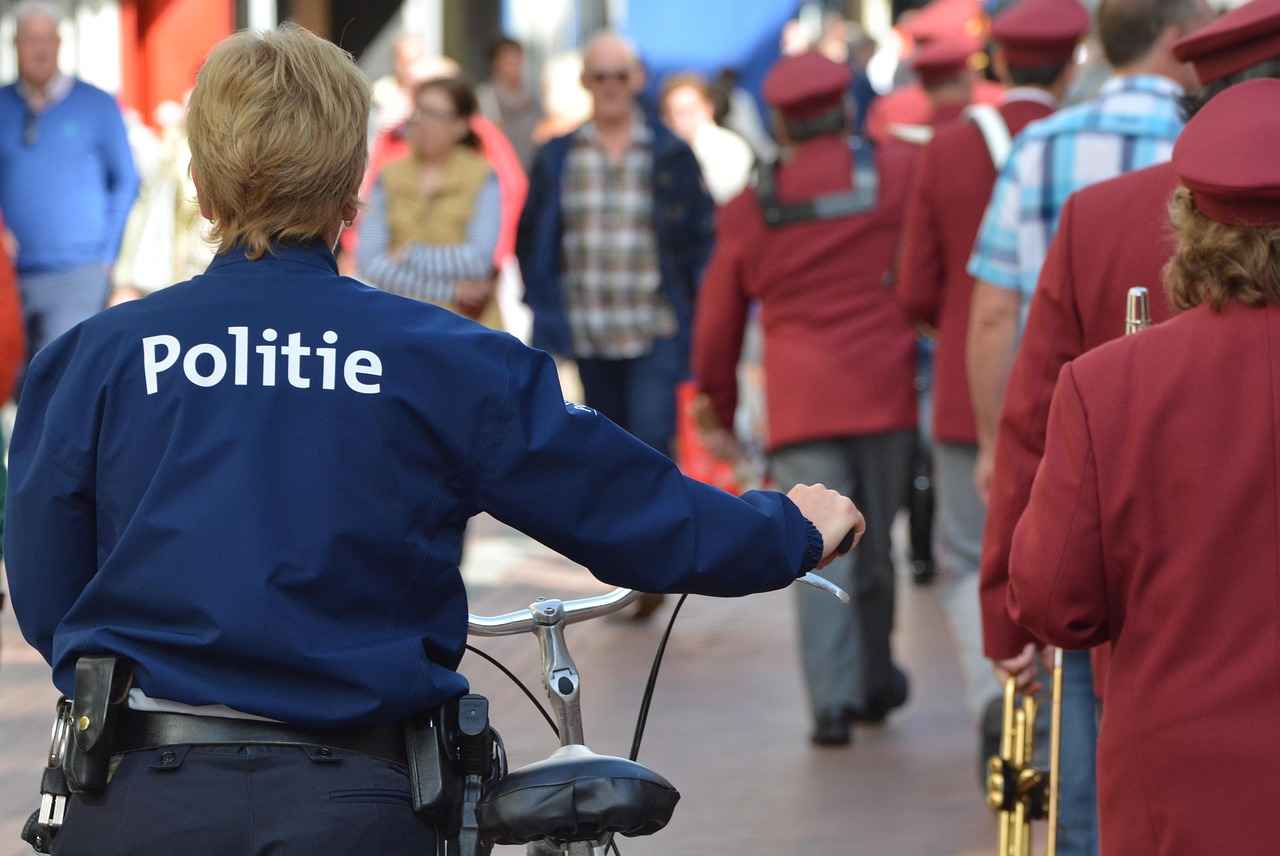
Character Development Over the Years
In the world of Paw Patrol, each character is crafted with distinctive traits and skills that not only define their roles but also contribute to the show’s overarching narrative. Since its debut in 2013, the series has seen significant character evolution, reflecting both the needs of its young audience and the creative vision of its producers.
The original team of pups, led by Ryder, has remained at the heart of the series. However, as the show progressed, new characters were introduced, each bringing their unique flair and abilities. For instance, the introduction of characters like Rubble, the construction pup, and Everest, the snow rescue dog, has enriched the storyline, allowing for a broader range of adventures and challenges. These characters not only diversify the team but also enhance the show’s appeal by representing various professions and skills.
One of the most notable aspects of character development in Paw Patrol is the deepening of backstories. Initially, the characters were presented as straightforward heroes, each with a specific job. However, as the series evolved, more attention was given to their individual backgrounds and motivations. For example, Chase’s role as a police pup now includes themes of bravery and leadership, while Marshall, the fire pup, showcases his clumsiness as a source of humor and relatability. This layered storytelling allows young viewers to connect with the characters on a more personal level.
Introduction of New Characters
As Paw Patrol expanded, the introduction of new characters has played a crucial role in keeping the narrative fresh and engaging. Each new pup not only adds diversity but also introduces fresh dynamics within the team. For example, the addition of Tracker, the jungle pup, has opened up opportunities for adventures in new settings, emphasizing exploration and environmental themes. The evolving team dynamics encourage lessons in teamwork and collaboration, which are central to the show’s educational goals.
Character Backstories and Relationships
The relationships between the characters have also evolved significantly. The bonds formed among the pups are portrayed with depth, showcasing themes of friendship, loyalty, and support. For instance, the camaraderie between Skye and Rubble highlights the importance of teamwork, while Chase’s protective nature towards the younger pups emphasizes responsibility and mentorship. These relationships not only enrich the storytelling but also serve as valuable lessons for young viewers about the importance of connection and support in friendships.
Impact on the Show’s Narrative
The evolution of characters in Paw Patrol has had a profound impact on the show’s narrative structure. As characters grow and develop, the storylines have become more complex, addressing real-world issues such as environmental conservation, community service, and the importance of helping others. This shift not only keeps the content relevant but also aligns with the educational objectives of the series, making it a valuable resource for young audiences.
Furthermore, the character development has led to thematic changes that resonate with contemporary societal values. The show now emphasizes problem-solving skills, empathy, and the significance of working together to overcome challenges. This evolution reflects a broader trend in children’s media, where the focus is increasingly on teaching valuable life skills through engaging storytelling.
In conclusion, the character development in Paw Patrol is a testament to the show’s ability to adapt and grow with its audience. By introducing new characters, deepening backstories, and evolving relationships, the series not only captivates young viewers but also imparts essential life lessons. As the show continues to progress, fans can anticipate even more exciting developments in the adventures of Ryder and his heroic pups.
Introduction of New Characters
Paw Patrol, the beloved animated series, has captured the hearts of children and parents alike since its debut in 2013. As the series has evolved, it has successfully introduced a variety of new pups, each bringing unique skills and personalities to the team. This section delves into the introduction of these new characters, highlighting their contributions to the storyline and their impact on audience engagement.
Initially, the show centered around a core group of pups, including Chase, Marshall, and Skye. However, as the series progressed, the creators recognized the need to expand the team to keep the narratives fresh and dynamic. This led to the introduction of several key characters, each designed to resonate with young viewers and enhance the educational value of the show.
- Everest: Introduced in Season 2, Everest is a snow rescue pup who brings a new dimension to the team. Her expertise in winter conditions not only adds variety to the missions but also teaches children about safety and teamwork in different environments.
- Tracker: This adventurous pup, introduced in Season 3, has a keen sense of hearing and a love for the jungle. Tracker’s character promotes curiosity about nature and wildlife, encouraging kids to explore the world around them.
- Rubble: As a construction pup, Rubble was added to the team to address construction-related challenges. His character emphasizes the importance of building and problem-solving, making him a favorite among young viewers interested in engineering and construction.
- Liberty: The newest addition, Liberty, made her debut in the Paw Patrol movie. This energetic pup represents the spirit of adventure and friendship, appealing to children’s desire for exploration and teamwork.
Each new character has not only enriched the storyline but also contributed to the overall themes of friendship, cooperation, and community service. The diversity of skills among the pups allows the show to tackle a wide range of challenges, from rescuing animals to solving community problems, thereby promoting problem-solving skills in its young audience.
Moreover, the introduction of these characters has fostered greater audience engagement. Children often identify with specific pups, leading to discussions about their favorite characters and the lessons learned from their adventures. This engagement is crucial, as it encourages children to think critically about the situations presented in each episode and how they can apply similar problem-solving techniques in real life.
The characters’ backstories also play a significant role in enhancing viewer connection. By providing context for each pup’s abilities and personality, the show encourages empathy and understanding among its young viewers. As children learn about the challenges each character faces and how they work together to overcome obstacles, they develop a deeper appreciation for teamwork and community spirit.
In conclusion, the introduction of new pups in Paw Patrol has been instrumental in keeping the series relevant and engaging for its audience. Each character not only adds unique skills to the team but also serves as a role model for young viewers, teaching them important life lessons. As the series continues to evolve, fans can look forward to even more exciting characters and adventures that will inspire and educate children around the world.
Ryder: The Team Leader
Paw Patrol, the beloved animated series, has captured the hearts of children and parents alike since its debut in 2013. At the heart of this engaging narrative is Ryder, the young leader of the Paw Patrol team. His character not only guides the pups through various missions but also embodies the values of teamwork, responsibility, and compassion that are central to the show’s themes.
Ryder’s Role in Paw Patrol
Ryder serves as the central figure in Paw Patrol, acting as both a mentor and a friend to the pups. He is portrayed as a resourceful and intelligent boy who possesses a deep understanding of each pup’s unique abilities. This knowledge allows him to assign tasks effectively, ensuring that the team operates smoothly. His leadership style is characterized by encouragement and support, fostering an environment where each pup feels valued and capable.
Character Development
Over the years, Ryder’s character has seen significant development. Initially depicted as a straightforward leader, he has evolved into a more complex figure. His interactions with the pups reveal his growth as he learns from them just as they learn from him. This reciprocal relationship enhances the show’s narrative depth, illustrating that leadership is not just about authority but also about learning and growth.
Ryder’s Leadership Style
- Empathy: Ryder often demonstrates empathy, understanding the fears and concerns of his team. This emotional intelligence allows him to connect with the pups on a personal level.
- Problem-Solving: He is a master problem-solver, often devising creative solutions to challenges that arise during their missions.
- Encouragement: Ryder consistently encourages the pups, celebrating their successes and helping them learn from their mistakes, which promotes resilience.
Impact on the Team
Ryder’s presence greatly impacts the dynamics of the Paw Patrol team. His leadership instills a sense of confidence in the pups, enabling them to tackle challenges head-on. For instance, when faced with a difficult rescue, Ryder’s calm demeanor reassures the team, allowing them to focus on the task at hand. This aspect of his character not only serves to entertain but also imparts valuable life lessons to young viewers about the importance of teamwork and support.
Ryder’s Relationships with the Pups
The relationships Ryder has with each pup are integral to the show’s appeal. He understands their individual strengths and weaknesses, which allows him to tailor his approach to each member. For example, with Chase, he emphasizes leadership and responsibility, while with Skye, he fosters creativity and courage. This personalized attention helps the pups grow and develop, making them not just followers but active participants in their adventures.
Conclusion
In conclusion, Ryder’s character is essential to the success of Paw Patrol. His evolution from a simple leader to a multifaceted mentor reflects the show’s commitment to depicting positive role models for children. As he continues to guide the pups through various adventures, Ryder remains a symbol of what it means to be a true leader—one who listens, learns, and grows alongside his team.
Chase, Marshall, and Skye: Iconic Heroes
Chase, Marshall, and Skye are not just characters in the beloved children’s series Paw Patrol; they are iconic heroes who have captured the hearts of young audiences worldwide. Each character brings unique traits and skills to the team, making them relatable and inspiring to children. This section delves into their growth, personality traits, and the reasons they resonate so deeply with fans.
The original trio debuted in 2013, and since then, they have undergone significant development. Chase, the German Shepherd, is known for his leadership qualities and problem-solving skills. Initially portrayed as the team’s police pup, Chase has evolved to embody qualities such as bravery and teamwork. His character often takes the lead during missions, teaching children the importance of responsibility and decision-making.
Marshall, the enthusiastic Dalmatian, serves as the team’s firefighter. His clumsy yet lovable nature provides comic relief, making him a favorite among younger viewers. Over the years, Marshall has shown remarkable growth, learning to overcome his fears and embrace challenges. This transformation resonates with children who may also struggle with confidence, reinforcing the message that it’s okay to be imperfect.
Then there’s Skye, the adventurous Cockapoo, who is not only a skilled pilot but also a role model for young girls. Skye’s character promotes empowerment and independence, showcasing that girls can be just as brave and capable as boys. Her love for adventure encourages children to explore their surroundings and embrace their curiosity.
What makes these characters particularly special is their relatability. Children see parts of themselves in Chase, Marshall, and Skye, whether it’s Chase’s determination, Marshall’s goofiness, or Skye’s adventurous spirit. This connection fosters a sense of belonging and encourages kids to embody similar positive traits in their daily lives.
Moreover, the show has successfully integrated valuable life lessons through the adventures of these pups. Each episode typically revolves around a problem that requires teamwork, creativity, and resilience to solve. For instance, when Chase leads the team to rescue a kitten stuck in a tree, it emphasizes the importance of helping others and working together to achieve a common goal.
The trio also demonstrates the significance of friendship and loyalty. Their interactions highlight the importance of supporting one another, reinforcing the idea that teamwork can lead to success. This is particularly impactful for young viewers, as it teaches them how to navigate relationships and understand the value of collaboration.
In addition to their character growth and relatability, Chase, Marshall, and Skye have become symbols of positivity in children’s media. Their adventures are not just entertaining; they serve as a platform for teaching children about real-world issues, such as community service and environmental awareness. By addressing these topics, the series encourages young viewers to be proactive and engaged citizens.
As Paw Patrol continues to evolve, the original trio remains a cornerstone of the franchise. Their enduring popularity is a testament to the show’s ability to adapt and resonate with each new generation of children. With their unique personalities and inspiring stories, Chase, Marshall, and Skye will undoubtedly continue to be cherished heroes for years to come.
Character Backstories and Relationships
Understanding the characters’ backgrounds in Paw Patrol significantly enhances viewer connection. Each pup brings a unique story that not only shapes their personality but also establishes their relationships with one another. The depth of these characters and their interactions create a rich narrative that resonates with young audiences.
- Chase: As a German Shepherd and the team’s police pup, Chase’s backstory includes a strong sense of duty and responsibility. His leadership qualities are often highlighted, making him a natural role model for children. His relationship with Ryder is particularly significant, as it illustrates trust and mentorship.
- Marshall: The playful Dalmatian serves as the team’s firefighter. Marshall’s clumsiness is endearing, and his journey shows how he overcomes challenges. His friendship with Chase and Skye adds a layer of camaraderie, showcasing the importance of teamwork and support.
- Skye: The adventurous Cockapoo brings a sense of courage and determination to the team. Her background as a helicopter pilot allows her to take on unique challenges. The dynamic between Skye and her fellow pups, especially with Marshall, highlights themes of friendship and encouragement.
The relationships among the pups evolve throughout the series, reflecting their growth and experiences. For instance, the introduction of new characters like Rubble and Zuma not only enriches the team but also creates new dynamics. Rubble, the construction pup, often collaborates with Chase, while Zuma, the water rescue pup, adds a fun-loving spirit that lightens the mood during tense situations.
Moreover, the interactions within the team emphasize essential values such as cooperation, empathy, and problem-solving. Episodes often depict scenarios where the pups must work together, drawing on their individual strengths to overcome obstacles. This collaborative spirit is a core element of the show, teaching children the importance of teamwork and friendship.
As the series progresses, the character development deepens. The backstories are not merely for entertainment; they serve to teach valuable life lessons. For example, episodes that explore Chase’s fears or Marshall’s insecurities provide relatable moments for children, encouraging them to face their own challenges with bravery.
In addition to personal growth, the relationships among the pups also reflect broader themes of community and support. The pups often engage with various characters in Adventure Bay, reinforcing the idea that teamwork extends beyond their group. This interaction helps children understand the significance of building relationships within their communities.
Overall, the character backstories and evolving relationships in Paw Patrol play a crucial role in engaging young viewers. By presenting relatable challenges and showcasing the importance of friendship and teamwork, the show fosters a deeper connection between the audience and the characters. As children watch the pups navigate their adventures, they not only enjoy the entertainment but also absorb valuable lessons that will stay with them long after the credits roll.

Thematic Changes in Storylines
Paw Patrol has evolved significantly since its inception, reflecting the changing dynamics of society and the values that resonate with young audiences today. The show’s narratives have adeptly incorporated themes that emphasize teamwork, problem-solving, and friendship, which are not only central to the storyline but also serve as essential lessons for children.
In the early episodes, the focus was primarily on the pups’ adventures and their ability to tackle various challenges in Adventure Bay. However, as societal values shifted, the creators recognized the importance of embedding deeper themes into the narratives. The importance of teamwork became a recurring motif, showcasing how the pups collaborate to achieve their goals. This collaboration teaches young viewers that working together can lead to greater success, reinforcing the idea that no one is an island.
Moreover, the show has made significant strides in highlighting problem-solving skills. Each episode typically presents a unique challenge that the Paw Patrol must overcome, encouraging children to think critically and develop solutions. For instance, when faced with a natural disaster or a community issue, the pups engage in strategic planning and brainstorming, demonstrating that challenges can be met with creativity and resourcefulness.
Friendship is another cornerstone of Paw Patrol’s narrative. The interactions among the pups illustrate the value of loyalty, support, and understanding. The characters often face conflicts that test their friendships, but they always find a way to resolve their differences, teaching young audiences the importance of communication and empathy in maintaining relationships.
As the series has progressed, it has also begun to incorporate more real-world issues into its storylines. Episodes addressing environmental conservation, community service, and inclusivity have become more prevalent, reflecting the growing awareness among children regarding global issues. For example, an episode may focus on the pups organizing a clean-up day in Adventure Bay, promoting awareness about littering and its impact on the environment.
Additionally, the introduction of diverse characters has enriched the narrative, allowing for a broader representation of cultures and backgrounds. This inclusivity not only enhances the relatability of the show but also fosters an understanding of diversity among young viewers.
Through seasonal specials and spin-offs, Paw Patrol continues to explore these themes in innovative ways. Special episodes often tie in with holidays or significant events, providing timely lessons that resonate with the audience. For instance, a holiday special may center around the spirit of giving and sharing, reinforcing the values of kindness and generosity.
In conclusion, the thematic changes in Paw Patrol’s storylines reflect a conscious effort to align with contemporary societal values. By emphasizing teamwork, problem-solving, and friendship, the series not only entertains but also educates its young audience, preparing them for the challenges of the real world. As the show continues to evolve, it will undoubtedly remain a vital part of children’s programming, instilling essential life lessons that will resonate with generations to come.
Incorporating Real-World Issues
Paw Patrol is not just an entertaining children’s show; it also serves as a platform for addressing significant contemporary issues that resonate with young viewers. One of the most notable themes woven into its episodes is environmentalism. The show frequently features storylines that encourage children to appreciate and protect their surroundings. For instance, episodes often highlight the importance of recycling, conserving water, and protecting wildlife. By showcasing these themes, the series aims to instill a sense of responsibility towards the environment in its young audience.
Additionally, community service plays a pivotal role in the narratives of Paw Patrol. The pups often engage in various community-building activities, demonstrating the value of helping others. Episodes may depict scenarios where the characters assist in organizing community events, helping lost pets find their way home, or even cleaning up parks. Such storylines are designed to teach children the significance of teamwork and the positive impact of contributing to their communities.
Furthermore, the incorporation of these real-world issues is not merely for entertainment; it is a deliberate educational strategy. The creators of Paw Patrol understand that children are impressionable and often emulate what they see on screen. By integrating lessons on environmental stewardship and community involvement, the show effectively educates its audience while keeping them engaged. Each episode serves as a mini-lesson, prompting discussions between parents and children about these important topics.
To illustrate how these themes are presented, consider a typical episode where the Paw Patrol team works together to clean up a local beach. Throughout the episode, the characters encounter various challenges that require problem-solving and collaboration. By the end of the episode, viewers not only witness the pups successfully cleaning the beach but also learn about the importance of keeping natural spaces clean and the impact of pollution on marine life.
Moreover, the show’s ability to address these themes is enhanced by its engaging storytelling and relatable characters. Children connect with the pups, who are portrayed as heroes not just because they save the day but also because they embody values that are integral to a sustainable future. This connection makes the lessons more impactful, as children are more likely to internalize messages delivered by characters they admire.
In conclusion, Paw Patrol’s approach to incorporating real-world issues like environmentalism and community service is commendable. By embedding these themes into its storylines, the show not only entertains but also educates, fostering a generation of environmentally conscious and community-oriented individuals. As the series continues to evolve, it will be interesting to see how it further adapts its narratives to address emerging global challenges, ensuring that it remains relevant and impactful for its audience.
Seasonal Specials and Spin-offs
Seasonal specials and spin-offs have significantly enriched the Paw Patrol universe, offering fans new adventures and deeper engagement with the beloved characters. Since its debut in 2013, the series has consistently expanded its storytelling horizons, ensuring that it remains fresh and appealing to its young audience. This section reviews some of the most notable episodes and spin-offs, exploring their contributions to the show’s longevity and widespread appeal.
- Holiday Specials: Each year, Paw Patrol introduces holiday-themed episodes that resonate with the festive spirit. For instance, the Christmas special not only entertains but also teaches valuable lessons about giving, friendship, and community. These episodes often include unique storylines that incorporate traditional holiday elements, making them a favorite among families.
- Spin-off Series: The introduction of spin-offs, such as Paw Patrol: Mighty Pups, has allowed for the exploration of new themes and powers. This series showcases the pups in a different light, emphasizing their superhero capabilities. Such spin-offs not only attract existing fans but also engage new viewers, broadening the show’s audience.
- Special Collaborations: Collaborations with popular franchises, like Paw Patrol teaming up with Teenage Mutant Ninja Turtles, have created crossover episodes that excite fans of both series. These special episodes often feature unique plotlines that highlight teamwork and friendship, reinforcing the show’s core values.
- Educational Themes: Many seasonal specials focus on educational themes, addressing topics such as environmental awareness and community service. For example, an Earth Day special may showcase the pups engaging in activities that promote sustainability, helping young viewers understand the importance of caring for the planet.
The success of these seasonal specials and spin-offs can be attributed to their ability to maintain the show’s core values while introducing new and exciting elements. By keeping the narratives dynamic and incorporating relevant themes, Paw Patrol has successfully captured the attention of children and parents alike.
Moreover, the show’s creators are adept at adapting to changing viewer preferences, ensuring that each new release feels timely and relevant. This adaptability has been crucial in maintaining the show’s popularity over the years.
In addition to entertaining content, these specials and spin-offs often include catchy songs and memorable moments that resonate with children. The use of music not only enhances the viewing experience but also encourages children to sing along and engage with the characters on a deeper level.
Overall, the expansion of the Paw Patrol universe through seasonal specials and spin-offs has played a vital role in its enduring success. By continuously introducing fresh content and exploring new themes, the series has managed to remain a beloved staple in children’s programming. As the show continues to evolve, fans can look forward to even more exciting adventures with their favorite pups, ensuring that the Paw Patrol legacy will endure for years to come.

The Impact of Paw Patrol on Children’s Media
Paw Patrol has emerged as a pivotal force in the realm of children’s programming since its debut in 2013. This animated series has not only entertained young viewers but has also played a significant role in shaping educational content and setting expectations for young audiences. In this section, we will explore how Paw Patrol has influenced children’s media and the broader implications of its success.
The show, created by Keith Chapman, features a team of animated puppies led by a boy named Ryder. Each character embodies distinct qualities that resonate with children, such as bravery, teamwork, and problem-solving. These traits are not merely entertaining; they are integral to the educational messages woven throughout the series. By showcasing scenarios where the pups tackle challenges, Paw Patrol instills valuable life skills in its viewers.
Paw Patrol has successfully integrated educational themes into its narratives. Episodes often revolve around community service, environmental awareness, and the importance of friendship. For instance, episodes that depict the pups engaging in rescue missions teach children about teamwork and collaboration. Such storylines encourage young audiences to understand the value of helping others, fostering a sense of responsibility and empathy.
The show has set a new benchmark for children’s programming by balancing entertainment with educational content. Parents and educators have come to expect more from children’s media, and Paw Patrol has risen to the occasion. By addressing real-world issues in a child-friendly manner, the series has created a template that many other shows now aspire to follow. This shift has resulted in a more informed generation of children who are aware of societal challenges from a young age.
The characters in Paw Patrol are designed to be relatable and inspiring. The diverse cast, which includes characters like Chase, Marshall, and Skye, allows children to see themselves represented on screen. This representation is crucial as it helps children form connections with the characters, enhancing their viewing experience. The show’s ability to create engaging content has led to a loyal fan base, which further influences children’s preferences in media.
The success of Paw Patrol extends beyond television. The extensive range of merchandise, including toys, clothing, and books, reinforces the show’s messages and characters. This merchandising success has not only solidified the show’s popularity but has also created additional learning opportunities through play. For example, children can reenact their favorite episodes, allowing them to practice problem-solving and creativity.
Another significant aspect of Paw Patrol’s impact is its global reach. The show has been adapted in various countries, allowing it to resonate with diverse audiences. Cultural adaptations showcase local values while maintaining the core messages of teamwork and community service. This adaptability has contributed to the show’s longevity and relevance, making it a staple in children’s media worldwide.
In summary, Paw Patrol has not only entertained children but has also significantly influenced the landscape of children’s programming. Its emphasis on educational content, relatable characters, and engagement with real-world issues sets a high standard for future shows. As Paw Patrol continues to evolve, its impact on young audiences and children’s media will undoubtedly persist, shaping the next generation’s understanding of teamwork, empathy, and responsibility.
Merchandising Success
The unprecedented success of Paw Patrol has given rise to a diverse range of merchandise, significantly contributing to the show’s popularity and cultural footprint. From toys to clothing and media tie-ins, each product not only serves as a source of revenue but also plays a crucial role in expanding the show’s reach among young audiences.
Toys are at the forefront of Paw Patrol’s merchandising strategy. The series has inspired an extensive line of action figures, playsets, and vehicles that allow children to recreate their favorite adventures at home. These toys are designed with attention to detail, ensuring that each character’s unique traits and abilities are represented. For instance, the Chase Police Cruiser and Marshall’s Fire Truck are not just toys; they are tools for imaginative play that encourage creativity and problem-solving skills in children.
In addition to toys, clothing featuring Paw Patrol characters has become immensely popular. Apparel items such as t-shirts, pajamas, and backpacks adorned with the heroic pups allow children to express their love for the show while also providing a sense of belonging to the Paw Patrol community. The clothing line often features vibrant colors and engaging designs that appeal to young fans, making it a staple in many households.
The impact of media tie-ins cannot be overlooked. Paw Patrol has collaborated with various brands to create books, video games, and even mobile applications that extend the show’s narrative beyond the screen. These media tie-ins not only reinforce the show’s themes of teamwork and friendship but also help in building literacy and cognitive skills among children. For instance, interactive storybooks allow kids to engage with the characters in new ways, enhancing their overall experience.
Moreover, seasonal merchandise releases, such as holiday-themed toys and apparel, keep the brand fresh and relevant throughout the year. This strategy not only boosts sales during peak shopping seasons but also maintains ongoing engagement with the audience. The limited-edition items often create a sense of urgency among parents, driving them to purchase products that their children will cherish.
Furthermore, the global appeal of Paw Patrol merchandise has led to adaptations in various markets. Different countries have tailored products to suit local tastes and preferences, which has further solidified the show’s international presence. For example, merchandise in some regions may feature local languages or culturally relevant designs, allowing children from different backgrounds to connect with the characters on a personal level.
In summary, the merchandising success of Paw Patrol is a multifaceted phenomenon that has significantly enhanced the show’s reach and popularity. By offering a wide array of toys, clothing, and media tie-ins, Paw Patrol has not only generated substantial revenue but has also fostered a deeper connection with its audience. The ongoing evolution of these products ensures that the franchise remains a beloved staple in children’s entertainment.
Global Reach and Cultural Adaptations
Paw Patrol has become a global phenomenon, captivating audiences far beyond its original Canadian roots. The show’s universal themes of teamwork, friendship, and problem-solving resonate with children and parents alike, making it a cherished series across various cultures. This section delves into how different countries have embraced the show, adapting its characters and stories to reflect local values and traditions.
Since its debut in 2013, Paw Patrol has been translated into numerous languages and aired in over 170 countries. Each adaptation often includes localized elements, making the series relatable to children from diverse backgrounds. For instance, in countries like Japan, the show has incorporated local flora and fauna into its episodes, allowing children to connect with the characters in a culturally relevant context.
In Brazil, the series has been particularly well-received, resulting in the creation of special episodes that highlight Brazilian festivals and community events. These adaptations not only enhance the viewing experience but also foster a sense of pride among young viewers as they see their culture represented on screen.
Moreover, the character names and traits have been modified in some regions to better align with local customs. For example, in Spain, the character of Chase is portrayed as a police dog with a strong emphasis on community safety, reflecting the country’s values surrounding law enforcement and public service.
The show’s impact extends beyond entertainment; it serves as a tool for education. In many adaptations, episodes are crafted to address local issues, such as environmental conservation in Australia or community service in South Africa. This approach not only entertains but also educates young viewers about the importance of social responsibility and environmental stewardship.
Furthermore, the merchandising of Paw Patrol has also adapted to local markets, with toys and merchandise featuring culturally relevant designs. In India, for example, the Paw Patrol pups are often dressed in traditional attire during festivals, making them more relatable to young Indian audiences.
As a result of these adaptations, Paw Patrol has successfully built a global community of fans who share a common love for the series while celebrating their unique cultural identities. This cultural exchange enriches the viewing experience, allowing children to learn from one another while enjoying the adventures of their favorite pups.
In conclusion, the global reach of Paw Patrol exemplifies how a simple children’s show can transcend cultural boundaries. By embracing local customs and values, the series has not only entertained millions but has also fostered a sense of global community among its young viewers. The ongoing adaptations will likely continue to evolve, reflecting the changing dynamics of global culture and the needs of its audience.

The Future of Paw Patrol
is an exciting topic that has captured the imagination of fans young and old. As the series continues to gain popularity, many are eager to speculate about what lies ahead for these heroic pups. With each new season, Paw Patrol has shown its ability to adapt and innovate, ensuring its relevance in the ever-evolving landscape of children’s entertainment.
One of the most anticipated aspects of the show’s future is the potential introduction of new characters. As the Paw Patrol team has expanded over the years, the addition of fresh pups has not only enriched the storyline but also provided new opportunities for teaching valuable life lessons. Future seasons may introduce characters that represent diverse backgrounds or unique skills, reinforcing the show’s commitment to inclusivity and representation.
- New Pups with Unique Skills: Speculation abounds regarding which new pups might join the team. Characters with skills in technology, environmental conservation, or even sports could be introduced, aligning with current trends and interests among children.
- Seasonal Themes: Future episodes may also explore seasonal themes more deeply, such as holiday specials that emphasize community and giving back, further engaging young viewers with relatable narratives.
Moreover, the show’s creators have a knack for integrating real-world issues into the storyline. As societal values evolve, so too does the content of Paw Patrol. Future episodes may tackle themes such as mental health awareness, sustainability, and teamwork in a more profound way, encouraging children to think critically about the world around them.
Additionally, the ongoing relevance of Paw Patrol in children’s entertainment is bolstered by its adaptability. The series has successfully transitioned from simple rescue missions to more complex story arcs that promote problem-solving and critical thinking. This evolution not only keeps the content fresh but also aligns with educational standards that parents and educators value.
As the franchise grows, merchandising will continue to play a crucial role in its future. The success of toys, clothing, and media tie-ins has shown that Paw Patrol resonates well with its audience. Future collaborations with educational brands or initiatives could enhance the learning experience for children, making the franchise even more valuable to parents.
Furthermore, the global reach of Paw Patrol cannot be overlooked. As the show has been adapted for various cultures, there is significant potential for localized content that reflects diverse traditions and values. This approach not only broadens the audience but also enriches the storytelling, making it more relatable to children worldwide.
In conclusion, the future of Paw Patrol is bright and full of possibilities. With the potential for new characters, deeper themes, and a continued commitment to relevance in children’s media, fans can look forward to many more adventures with Ryder and his team of heroic pups. As the franchise evolves, it will undoubtedly continue to inspire and educate young audiences for years to come.
Frequently Asked Questions
- What is the main premise of Paw Patrol?
Paw Patrol follows a group of rescue dogs led by a boy named Ryder. Together, they work to protect their community through teamwork, problem-solving, and a lot of fun adventures!
- How has the show evolved since its debut?
Since its launch in 2013, Paw Patrol has introduced new characters, expanded storylines, and incorporated real-world themes like environmental awareness and community service, making it more relatable for kids.
- Who are the main characters in Paw Patrol?
The main characters include Ryder, Chase, Marshall, Skye, and several other pups, each with unique skills and personalities that contribute to the team’s dynamic.
- Are there any spin-offs or special episodes?
Yes! Paw Patrol has several seasonal specials and spin-offs that explore new adventures and themes, keeping the content fresh and engaging for fans.
- What age group is Paw Patrol aimed at?
Paw Patrol is primarily aimed at preschoolers, but its themes of friendship and teamwork resonate with kids of all ages, making it a hit among families!



